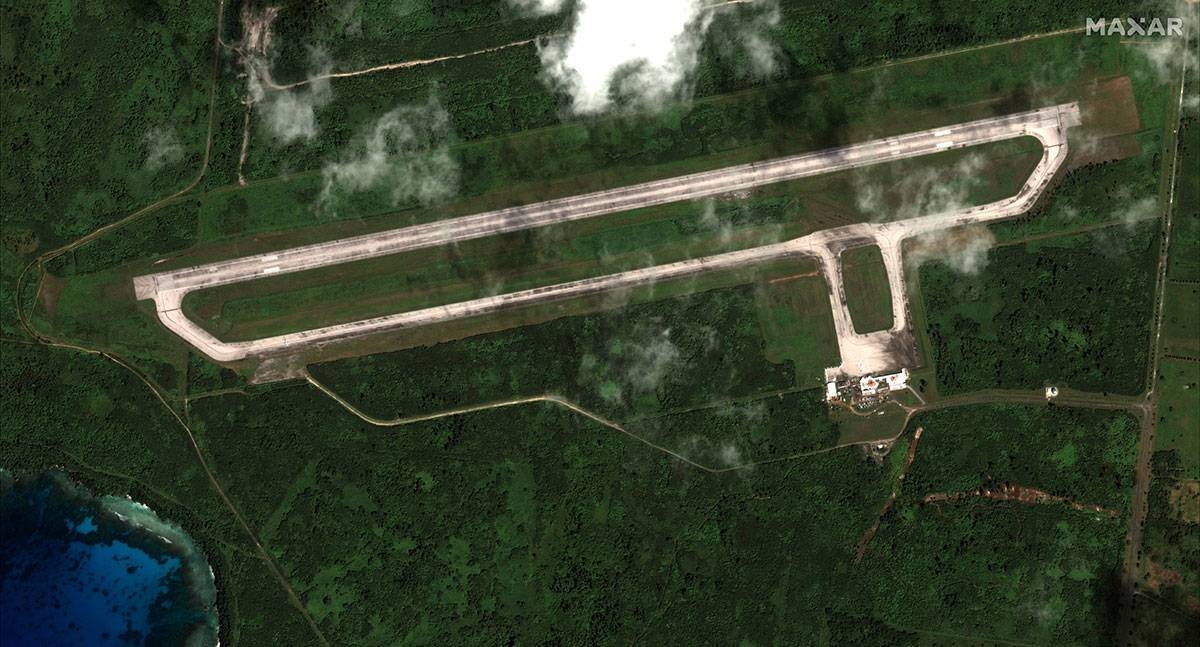In the middle of the Pacific Ocean, an abandoned US airfield that once played a crucial role in dropping the nuclear bomb on Japan is being revived. This historical site, located on Tinian island, was nearly lost to history as it became engulfed by encroaching forest. However, the United States is now taking action to reclaim and revitalize this important piece of its military history.
The motivation behind the restoration of Tinian island airfield and other World War 2-era bases in the region is not solely focused on Japan. Instead, it is driven by concerns over Beijing’s growing influence in the Pacific. As China expands its presence and builds its own bases in disputed waters, the United States sees the need to enhance its infrastructure and maintain a strong deterrent posture alongside its allies and partners.
The Pacific Air Forces (Pacaf) has identified the rehabilitation of these airfields as a rapidly executable avenue to enhance infrastructure in the region. While the statement emphasizes the sense of urgency and the need to improve warfighting capability, it does not explicitly mention China. However, it is clear that Washington’s plans for an extensive facility on Tinian are part of a larger military pivot to the Pacific in recent years.
The Department of Defense’s 2022 planning document, known as the National Defense Strategy, highlights China’s aggressive efforts to reshape the Indo-Pacific region and the international system to suit its own interests and authoritarian preferences. This document underscores the seriousness of the challenge posed by China and the need for the United States to respond accordingly.
Tinian’s old military airfield, buried beneath overgrown jungle, holds significant historical value. The plan is to clear the jungle and restore the airfield to its former glory. Air Force General Kenneth Wilsbach has stated that the jungle clearance will be completed by summertime. Additionally, military projects for fuel and airfield development at the island’s nearby civilian airport are already underway.
The airfield at Tinian was once the most important and busiest in the world in 1945. Its six runways played host to US B-29 bombers carrying out missions against Japan, including the fateful bombings of Hiroshima and Nagasaki. The dropping of the nuclear bombs, known as “Little Boy” and “Fat Man,” resulted in the loss of approximately 200,000 lives.
In recent years, there has been a significant increase in the funding allocated to Indo-Pacific military construction costs. The Pentagon’s strategy is to establish flexible military bases that can operate independently of the larger, longstanding installations in Japan, South Korea, and Guam. Tinian is a key part of this strategy, with tarmac rehabilitation and the construction of fuel tanks set to be completed within two years.
The total cost of the projects on Tinian remains unclear due to differing timelines and requirements, as well as the involvement of entities other than the US Air Force. However, the investment in revitalizing these airfields demonstrates the United States’ commitment to maintaining a strong presence in the Pacific and countering China’s assertive actions.
In conclusion, the revival of the abandoned World War 2-era airfields in the Pacific, particularly on Tinian island, is driven by the need to enhance infrastructure and maintain a deterrent posture in the face of China’s growing influence. These airfields hold historical significance and serve as a reminder of the sacrifices made during World War 2. By investing in their restoration, the United States aims to ensure its readiness and ability to respond to any potential threats in the region.
Source: The Manila Times








